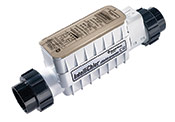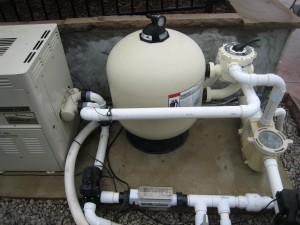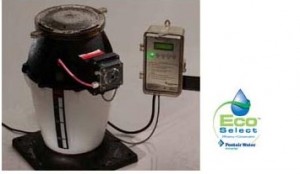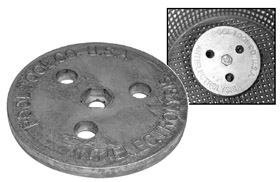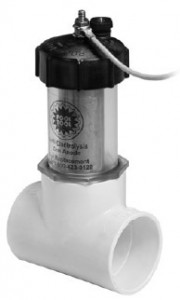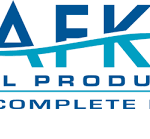Legendary Escapes Recommends the Pentair IntelliChlor Salt Generator for new swimming pool installations.
http://www.askthepoolguy.net — http://www.facebook.com/askthepoolguy – Al Curtis shares the process of converting a pool to a “salt pool” or one that generates it’s own chlorine. It’s not as salty as you may think. There is something that absolutely MUST be installed with a salt system that is sometimes overlooked, don’t miss it.
About Salt Systems
Salt systems are a huge trend in pools. The chlorine generators use ordinary salt and break it apart into sodium and chlorine. The chlorine cleans your pool and clears the water; then, when the chlorine has done it’s job, it hooks back up with the sodium and turns back into salt. The salt is recycled continuously, day after day, reducing maintenance requirements even more. A salt system is the easiest, most effective and convenient way to keep your pool clean. Chlorine generators provide the same sanitation performance as manual chlorine addition without the drawbacks–you never have to handle chlorine. You don’t need to buy and store chlorine compounds and you’ll never have to deal with the smell, stinging eyes and bleached bathing suits.
Ask the Pool guy loves salt systems. “They’re great,” he says, “because it keeps people from having to handle chemicals. Adding salt to a pool is a whole lot easier and safer than adding chlorine.” Salt systems also reduce maintenance requirements. “The chemical process that happens is amazing–it constantly recycles the salt, so you don’t have to add salt nearly as often as you would have to add more chlorine in a standard pool.”
Ask the Pool Guy: Why does corrosion happen in a salt pool?
IC-40 Chlorine Generator
Saltwater swimming pools are what’s trendy and cool these days, because they can leave skin feeling softer and smoother upon leaving the pool, unlike other non-saltwater pools that can leave your skin dry and flaky when you get out of the water. But saltwater swimming pools do require some extra attention and care, and some additional pieces of equipment. One of these pieces of equipment you’ll need is a chlorine generator.
Chlorine generators will do all the work of handling, storing, and adding chlorine to the pool for you. It’s an automatic generator that will constantly produce chlorine for the pool. The generator will then keep the pool free of bacteria and algae. Because these pieces of equipment need some salt in the water in order to run properly, chlorine generators are generally only used in saltwater pools. Not all chlorine generators however, need salt in the water to run effectively. There are some generators that are called ‘brine units.’ These generators have a chamber in them that have salt in them so that no salt needs to be added to the water first. These types of generators are not recommended however, because they can create by-products that are difficult to get rid of, and they are also fairly messy.
Chlorine generators work through the process of electrolysis. First, water is passed over the chlorine generator, which produces chlorine. This chlorine is then instantly transformed into hypochlorous acid. This acid is the main cleaning component in chlorine and is what all chlorine turns into when it enters a pool; it is this acid that will work to kill algae and other bacteria in the pool. To do this however, the water still needs to maintain proper levels, especially proper pH levels.
Chlorine generators are very handy pieces of equipment to have around, because they save the pool owner from fussing with the chlorine themselves. However, these machines still require some maintenance themselves. The main thing to remember is that it’s important to keep the generator’s cell free of calcium and other mineral deposits that can quickly build up on the generator’s surface. The actual cell itself in a chlorine generator is made up of different precious metals and it must be properly maintained so that it continues to work properly.
There are now units available called ‘reverse polarity’ chlorine generators. These units reverse the electrolysis process, causing mineral deposits and flakes to fall off of the unit, without you having to do anything. These larger pieces will then be caught by the pool’s filtration system as it continues to clean itself. Manufacturers of reverse polarity chlorine generators claim that these units never need to be cleaned but be wary of that statement. All chlorine generators will need cleaning at some point, although these units definitely make it much easier.
One very important thing to remember is that for chlorine to be generating your pool has to be running. Depending on the size and call for chlorine in your pool you may need to run it 24/7 if you install a 30k gal unit on a residential pool. For extra large pools, more than one cell is recommended. There are also units being made for smaller, above ground pools as well.
How salty is a salt water pool?
The salt level for a safe, chlorinated pool is about 2,500 to 4,000 PPM (parts per million). Most people can’t taste salt until the PPM is around 5,000. So for most people, it’s not even noticeable. It freaks a lot of people out to dump salt directly into their pools, especially in the quantity that is necessary. But it’s important to remember how many gallons are in your pool. With the huge quantity of water in a swimming pool, the ratio of salt to water is about a teaspoon per gallon. If you’re worried about how salty your pool might taste, you can test it by simply putting a teaspoon of salt into a gallon of water.
You only need to add salt to your pool or spa if your control box indicates your levels are low or, obviously, you have completely (or significantly) drained your pool.
Here is how to figure out how much salt you would need after just filling it with fresh water.
If you don’t already know, estimate how many gallons your pool holds.
The formula (using feet) is:
Average Depth x Length x Width x 7.5 = Gallons
The average depth = (depth at shallow end + depth at deep end) divided by 2
Example:
The pool is 50’ long and 20’ wide. The shallow end is 3’ and the deep end is 9’.
Average depth = (3’ + 9’) / 2 = 6’
6’ x 50’ x 20’ x 7.5 = 45,000 gallons
If this is a new pool, you will need 50 lbs salt for every 2,000 gallons to get about 4,000 ppm, a good starting point. So for this example, you would need 1,125 lbs of salt
For existing pools, the previous usage of chlorine bleach or tablets will have already created a level of salt in the water. Have the water tested and then add the appropriate amount to establish 4,000 ppm.
Example:
The measurement for this same pool is 3,000 ppm.
So you need to add 1,000 ppm or ¼ of the example above = about 280 lbs
Once your salt level is established, there is no need to add salt unless the pool is drained or loses a significant amount of water. The most common ways you lose salt is through leaks, rainwater overflow, filter backwash, fun-time splashing, and what leaves on everyone’s swimsuit. Evaporation does not lose salt, it just increases the concentration. Add water to reduce the salt concentration back to 4000 ppm. Most chlorine generator units have low salt indicators and the digital type even give you the proper amount of salt needed to return to 4000 ppm.
How do I add the salt?
Pour it in. Agitation, sweeping, or brushing will help the salt dissolve faster. It will happen even faster if you turn on the pump, open the bottom drain, and add the salt over the drain. Running the pump for about 24 hours will dissolve it evenly throughout the pool. Granular salt will dissolve 60 – 70% before even hitting bottom. The remaining salt can simply be brushed into the drain. Other forms of salt, take longer to dissolve but the same actions will make apply.
What happens if I add too much?
You will have salty tasting water, but there is no harm done to your chlorine generating system. Some people like more salt because it is closer to their natural salinity level. It’s more comfortable for them. The chlorine generating units will tell you when there is too much salt in the water for them to function properly, and you can drain some and refill with fresh water at that point.
If it is over 6000 ppm, you may damage metallic equipment, such as stainless steel handrails, ladders, filters, light rings, and copper heat exchangers. To reduce the salt level, drain some pool water and replace with fresh water.
pH/Total Alkalinity in Salt Water Pools
The pH and Alkalinity need to be constantly monitored to make sure they stay in optimal operating levels for the pool. Muratic Acid or pH reducer needs to be added most often since the generator is making liquid chlorine with a pH of about 13%, by the time it affects the pool it’s about 8.5%, which is above the optimal level of 7.4 in a pool. This can be added by hand, or there is a dispenser unit available that will do it automatically as well. (an example is pictured below)
What is a Zinc Anode? Do I need one on a Salt Water Pool?
Yes, you ABSOLUTELY MUST have a zinc anode on a salt water pool! One option for a zinc anode is a small round disc that is secured in your skimmer basket – it’s a small, yet important part of the system.
A zinc anode is an important part of your chlorine generating system. It is protects the metal components of your swimming pool from corrosion. The zinc anode will be the first thing to corrode, saving the other parts of your pool from corrosion. We are happy to quote a salt system if you might want to convert your pool to a salt/chlorine generating pool. If you have a salt pool already – double check to make sure you have a zinc anode. They are often overlooked, and are a critical part of your system!
The other way to include a zinc anode in a system is to plumb it in with the plumbing. Slightly more work to install, but this way you are sure not to lose it.
For those of you that have a salt pool. Here is the reason why you need a zinc anode. It becomes the sacrifice for trade electrical charges in the water. Without it trace electrical attacks metal parts of the pool.
Interested in a quote?
If you are interested in a chlorine generating system, we are happy to quote the install for you. Our quote will depend on the size of your pool, and existing equipment set up. We would quote an all inclusive package including the salt cell, power unit, installation, salt for in the pool, and the small but important zinc anode. Please call or email for your complimentary estimate.
